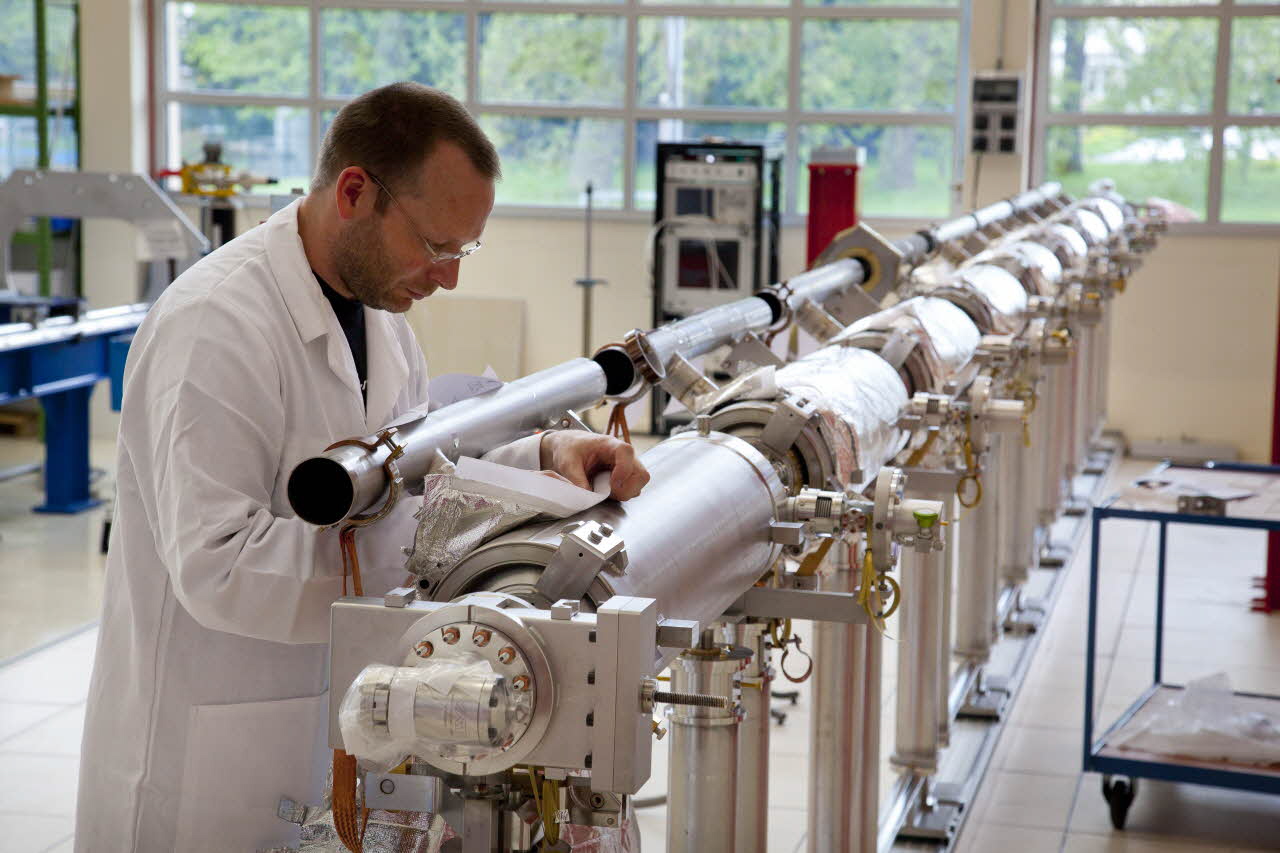
More powerful and faster, the European XFEL free electron laser is inaugurated on September 1, 2017, near Hamburg, Germany. By producing ultra-bright X-ray flashes (one trillion photons per flash), two hundred times more numerous per second than the best free electron lasers available, this new generation European laser will enable scientists to map the atomic details of viruses, decipher the molecular composition of cells, make three-dimensional images of the nanoworld or film chemical reactions. Eleven countries participated in its construction, for a total budget of 1.2 billion euros. In France, the CEA and the CNRS played a leading role in the design and construction of the superconducting electron accelerator, which is at the heart of this new international research infrastructure.
Click here to read the press release in French on the CEA website

